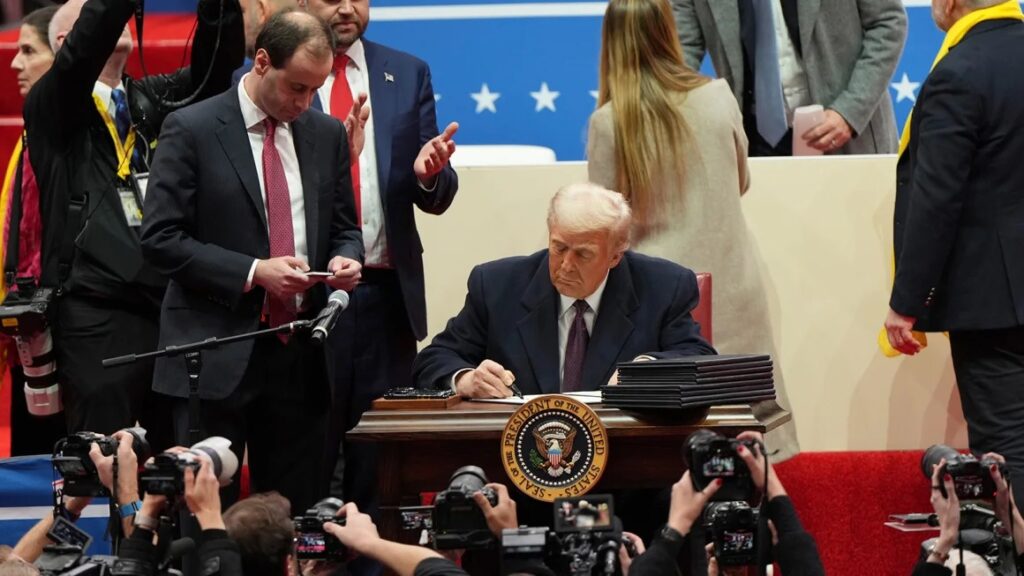Trump Reinstates "Free Speech" Executive Order, Reigniting Censorship Debate and Raising Concerns About Disinformation
Former President Donald Trump, upon his return to the Oval Office, signed an executive order purportedly aimed at safeguarding freedom of speech and combating alleged federal censorship. The order explicitly prohibits federal officials from engaging in any actions that could potentially infringe upon the constitutional free speech rights of American citizens. Additionally, it directs the attorney general to investigate the Biden administration for any past instances of censorship. The executive order frames its objective as countering the government’s alleged suppression of dissenting voices under the guise of combating misinformation, disinformation, and malinformation. It claims the previous administration promoted a preferred narrative on key public issues by stifling opposing viewpoints, thereby violating the First Amendment rights of Americans.
This move follows years of accusations by right-wing media personalities and Republican lawmakers, alleging a concerted effort by Democrats and tech companies to censor conservative viewpoints online. These accusations intensified during the COVID-19 pandemic and election cycles, focusing on topics such as vaccine efficacy, election integrity, and the origins of the virus. They claim their voices were unfairly suppressed and labeled as misinformation, hindering open dialogue and public discourse. The executive order taps into this narrative, presenting itself as a corrective measure to restore free speech online.
The Supreme Court’s ruling last year affirmed the US government’s right to communicate with social media platforms regarding misinformation and disinformation. This decision effectively granted the Biden administration the legal authority to flag potentially harmful content. While the ruling ostensibly aims to combat the spread of dangerous falsehoods, conservatives interpret it as a tool for censorship, potentially empowering the government to silence dissenting voices. They argue that this communication could pressure platforms to remove content critical of the government or promote specific narratives.
Conservatives view Trump’s executive order as a fulfillment of his campaign promise to dismantle the perceived alliance between the government and Big Tech to silence conservative perspectives. They see it as a necessary step to level the playing field and ensure their voices are heard. Conversely, some disinformation experts warn that the order might inadvertently exacerbate the spread of false information on social media platforms. They argue that by restricting government interaction with tech companies, the order limits the ability to address harmful content effectively and protect the public from manipulation and deception. They fear that during crises, this unchecked spread of misinformation could have serious real-world consequences.
The executive order’s potential impact remains a subject of intense debate. Supporters argue it is a crucial step in protecting free speech and preventing government overreach, while critics express concerns about the potential for increased misinformation and its repercussions. The central question revolves around the balance between protecting free speech and combating the spread of harmful falsehoods. Where does the line lie between legitimate government intervention and censorship?
The order’s long-term effects remain to be seen, contingent on legal challenges and its implementation. The attorney general’s investigation into the Biden administration’s actions will undoubtedly be a focal point, potentially revealing new information about government interaction with social media platforms and the extent of content moderation. The order’s vague language regarding "unconstitutionally abridging free speech" also leaves room for interpretation and potentially conflicting legal opinions. How this language will be interpreted and enforced will significantly impact the order’s practical effects. Furthermore, the dynamic interplay between the government, social media platforms, and the dissemination of information will continue to evolve, shaping the future of online discourse. This executive order represents a significant development in this ongoing conversation, reaffirming the inherent tension between free speech and the regulation of potentially harmful content.


